Scene of the Crime

Brief Synopsis
Cast & Crew
Roy Rowland
Van Johnson
Arlene Dahl
Gloria De Haven
Tom Drake
Leon Ames
Film Details
Technical Specs

Synopsis
Late one night, on a Los Angeles city street, a plainclothes policeman is murdered in front of a young couple. When it is learned that the murdered man, Ed Monigan, was robbed of $1,000, police captain Forster suspects that Monigan was on the take and involved in an illicit gambling ring that is operating out of a nearby cigar store, and that his murder is somehow connected to a new betting operation that is trying to take over all the bookies in the city. When police detective Mike Conovan is summoned to the crime scene, he disputes the captain's theory, and is certain that Monigan was not involved in any illegal activities. The captain assigns Mike to the case, along with veteran detective Fred Piper and a young rookie nicknamed C. C. The three detectives begin their investigation, with their only clues coming from the eyewitnesses, who described the killer as being left-handed and having a mottled face. In the hope of learning more about the killer, Mike questions a police informant named Sleeper about Arthur Webson, a known gambling ring operator, and any new associates Webson may have acquired. Though the interrogation provides no new leads, C. C. finds a matchbook in Sleeper's possession, in which the names Turk Kingby and Lafe Douque are inscribed. After adding Kingby and Douque to the list of possible suspects or accomplices, Mike pays a friendly visit to Monigan's son Ed. Ed angrily blames Mike for his father's death, claiming that he would not have placed himself in such a dangerous position had he not been trying to prove himself to Mike. Ed then asks Mike to devote himself to clearing his father's good name. While searching for Kingby, Mike and C. C. witness two men forcing a man into a car. They follow the car to a warehouse, which is guarded by Umpire Menafoe, a former distillery operator and head of the bookie operations in the city. Menafoe, an old friend of Mike, allows Mike to watch a group of bookies line up suspects thought to be involved in a series of holdups. Later, Sleeper tells Mike that Kingby and Douque are part of a gang known as the Royalty Boys, and that they served time in Wallaby Prison. When Mike and Piper visit a private investigator named Pontiac, he tells them that Kingby had been associating with a "sizzler" named Lili, who was a burlesque dancer at the Club Fol-de-Rol. Mike visits Lili at the club and cultivates her trust by taking her to the movies and spending time with her. Later, Mike's wife Gloria makes a failed attempt to convince her husband to quit his dangerous work and take a safer job at a steel plant. After secretly planting a hidden microphone on a gangster named Hippo, Mike and some other detectives listen in on a conversation in which Douque confesses to killing a police officer. Douque, however, is killed shortly thereafter. When Hippo tells Mike that Kingby is planning to make a "big hit" against the bookie organization that killed Douque, Captain Forster sets out to snare the killers. Before the criminals are captured, however, Piper succumbs to a trap set by the killers and dies. Realizing that Lili must have tipped off the hitmen, Mike goes to the nightclub and demands an explanation. Lili confesses that she loves Kingby and that she set up all the murders to protect him. When Kingby is finally captured, Mike discovers that he used a special rubber glove to make himself appear to be left-handed, and that he used shoe polish to mottle his face. With the case solved, Mike is finally able to devote his attentions to Gloria.

Director

Roy Rowland
Cast

Van Johnson

Arlene Dahl

Gloria De Haven

Tom Drake

Leon Ames
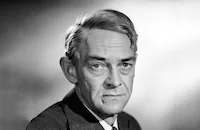
John Mcintire
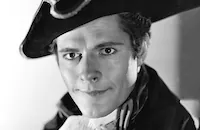
Donald Woods

Norman Lloyd
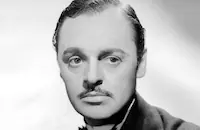
Jerome Cowan

Tom Powers

Richard Benedict

Anthony Caruso
Robert Gist
Romo Vincent

Tom Helmore
Caleb Peterson
William Haade
Mickey Kuhn
G. Pat Collins

Ray Teal
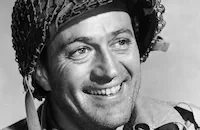
Don Haggerty
Allen Mathews

Gregg Barton
Mickey Mccardle
James R. Scott
William J. Tannen
Paul Fierro
Anthony Merrill
George Magrill
Ralph Montgomery
Richard Irving
Charles Wagenheim

William Mccormick
Victor Paul
Michael Jordan
Michael Barrett
Billy Dix
Guy Kingsford
Forrest Taylor
Ray Bennett
Jack Shea
Cameron Grant
Jean Carter
Jimmy Dundee
Douglas Carter
Lucille Barkley
Mack Chandler
Fred Murray
Harris Brown
John Phillips
Wilson Wood
Billy Snyder
Eddie Foster
Zon Murray
Bette Arlen
Jeffrey Sayre
Cameron Grant
Erin Selwyn
Sam Finn
Charles Regan
Jim Drum
Erno Verebes
John Mckee
Robert Strong
Allen Ray

Thomas E. Breen
Mary Jane Smith
Minerva Urecal
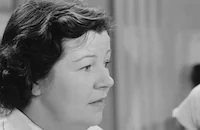
Margaret Bert
Sally Feeney
William Phipps
Crew
John Banse
Sara Berner
Gladys Blake
Jack Dawn
Otto Dyar
Henry Forrester
Dave Friedman
Cedric Gibbons
Arnold Gillespie
Jack Greenwood
Sydney Guilaroff
James Harper
Irene
William Katz
Robert J. Kern
John Bartlow Martin
André Previn
André Previn
Harry Rapf
Charles Schnee
Douglas Shearer
Alfred E. Spencer
Leonid Vasian
Paul C. Vogel
John A. Williams
Edwin B. Willis

Videos
Movie Clip





Trailer
Hosted Intro
Film Details
Technical Specs

Articles
Scene of the Crime
Van Johnson had hit stardom during World War II when his 4F status helped him stay in Hollywood and become the idol of millions of teenaged girls. At the time, his vehicles were fluffy comedies, with the occasional musical thrown in for good measure (he had started as a chorus boy on Broadway). But Schary saw something tougher under Johnson's bland exterior. He had tested the waters with a serious role in the realistic World War II drama Command Decision (1948), starring Clark Gable. Scene of the Crime would mark his first starring role as a tough guy. The character's penchant for wise cracks drew on the actor's comedy experience, while also revealing an unsuspected flair for cynicism. Johnson would continue in this vein with Schary's trend-setting World War II story Battleground (1949) and do well enough to be offered the role of Eliot Ness in the crime series The Untouchables (his salary demands would cost him the role, which went to Robert Stack instead).
Gloria DeHaven also was making a break from her typecasting as a vivacious ingénue. After learning her craft in a series of small, light-hearted roles that took full advantage of her beauty and singing talents, she had landed star billing in Summer Holiday (1948), a musical adaptation of Eugene O'Neill's Ah, Wilderness starring Mickey Rooney. Then Schary decided she needed to show her dramatic side in more adult roles, so he cast her as the stripper and gangster's moll who tries to distract Johnson from his quest for vengeance. Of course, she couldn't strip on screen, so the script had her perform a reverse strip, putting it on as she sang Andre Previn's "I'm a Goody Good Girl," an ironic commentary on her screen image. DeHaven, too, would explore dramatics further, most notably as Glenn Ford's bohemian sister in The Doctor and the Girl later that year.
To capture the story's noir shadings, Schary handed the script to recent studio arrival Charles Schnee, whose first original screenwriting credit had come with I Walk Alone, a 1948 thriller that attempted to put the gangster genre in touch with the realities of post-war life. The same year as Scene of the Crime, he would write one of the greatest of all film noirs, They Live by Night, an early rendition of the Bonnie and Clyde story. He would go on to win an Oscar® for his noir-ish dissection of Hollywood life, The Bad and the Beautiful (1952).
Director Roy Rowland had managed to straddle the worlds of realism and glamour at MGM for years. He had started his directing career there with the all-star musical, Hollywood Party (1934), but that film's failure had sent him into the world of movie shorts, where he polished his craft on the realistic "Crime Does Not Pay" dramas as well as comical featurettes by Robert Benchley and Pete Smith.
Rowland returned to features to direct star vehicles for the likes of Frank Morgan and Margaret O'Brien, but somewhere in there managed a solid job on the crime thriller Killer McCoy (1947), an attempt to toughen Mickey Rooney's image. Even after the success of Scene of the Crime, he managed to combine crime thrillers and lighter fare. One of his toughest films ever was MGM's Rogue Cop (1954), a brutal crime story starring Robert Taylor. But he also scored his most notable credit with the children's fantasy The 5,000 Fingers of Dr. T (1953), a cult favorite written by Dr. Seuss.
Scene of the Crime turned a profit, thanks to its relatively low budget and the continuing support of Johnson's fans. That was enough to keep Schary in office as he tried to remake MGM to meet changing audience tastes. With television eroding the studios' market, however, little noirs like this would eventually become the province of the small screen.
Producer: Harry Rapf
Director: Roy Rowland
Screenplay: Charles Schnee, based on the short story "Smashing the Bookie Gang Marauders" by John Bartlow Martin
Cinematography: Paul C. Vogel
Art Direction: Cedric Gibbons, Leonid Vasian
Music: Andre Previn
Cast: Van Johnson (Mike Conovan), Gloria DeHaven (Lili), Tom Drake (C.C. Gordon), Arlene Dahl (Gloria Conovan), Leon Ames (Capt. A.C. Forster), John McIntire (Fred Piper), Norman Lloyd (Sleeper), Donald Woods (Herkimer), Jerome Cowan (Arthur Webson), Robert Gist (Pontiac), Minerva Urecal (Woman).
BW-95m. Closed captioning.
by Frank Miller

Scene of the Crime
Quotes
Naturally, I know you know I know somethin'.- Sleeper
I know you know I know you know somethin'.- Mike Conovan
I'm no Humphrey Bogart. He gets slugged and he's ready for action; I get slugged and I'm ready for pickling.- P.J. Pontiac
Lili, a sizzler at the Fol-de-Rol. A figure like champagne and a heart like the cork.- P.J. Pontiac
Trivia
Notes
This film marked producer Harry Rapf's final film. Rapf, whose film career spanned four decades, and who joined M-G-M in 1924, died of heart failure on February 7, 1949, one week after shooting began on Scene of the Crime. A late January 1949 Hollywood Reporter news item noted that Donna Reed was originally set for the part played by Arlene Dahl. According to a March 1949 Hollywood Reporter news item, the film was completed on schedule and "well within" its $750,000 dollar budget.
















